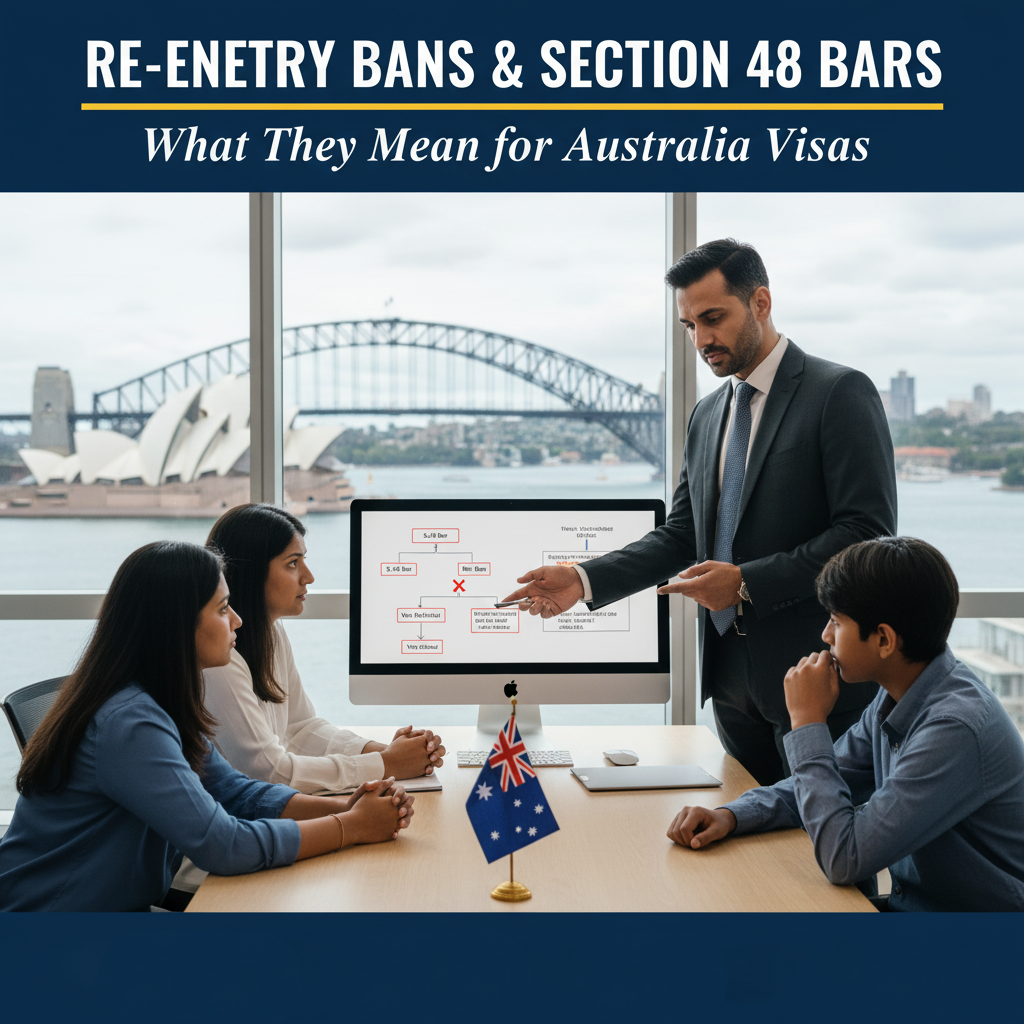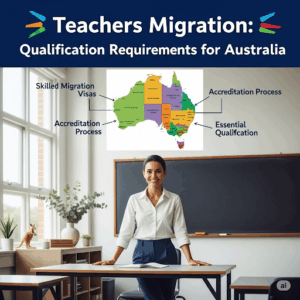Learn the meaning of re-entry bans and Section 48 bars in Australia, their impact on visa options, and how to navigate these immigration restrictions.
Re-Entry Bans & Section 48 Bars: What They Mean
Understanding Australia’s immigration rules is essential, especially when facing a visa refusal or cancellation. Two of the most critical restrictions are re-entry bans and the Section 48 bar. Both can significantly affect your ability to remain in or return to Australia. This article explains what these terms mean, who they affect, and how to respond if you encounter them.
Why Australia Enforces Re-Entry Bans and Section 48 Bars
Australia’s migration system is designed to protect the integrity of its borders and ensure that only eligible applicants remain or return. Re-entry bans and the Section 48 bar are key tools used to:
- Discourage repeated or frivolous visa applications.
- Ensure compliance with visa conditions.
- Prevent unlawful stays and overstaying.
- Encourage applicants to follow legal migration pathways.
By enforcing these rules, Australia maintains a fair and orderly immigration process.
Top Benefits of Understanding These Restrictions
Knowing how re-entry bans and Section 48 bars work can help you:
- Avoid costly mistakes: Understanding these rules helps prevent actions that could trigger bans or bars, saving time and money.
- Plan your next steps: If you face a visa refusal or cancellation, knowing your options can help you act quickly and legally.
- Protect your future eligibility: Staying compliant with migration laws improves your chances for future visa approvals and citizenship.
- Access limited exceptions: Some visas are exempt from Section 48, allowing certain applicants to remain in Australia legally.
- Seek timely legal help: Early advice from a migration professional can make a significant difference if you face these restrictions.
Section 48 Bar Explained
Section 48 of the Migration Act is a legal provision that restricts certain non-citizens in Australia from applying for most new visas onshore if their visa has been refused or cancelled while they are in Australia. This is commonly referred to as being “Section 48 barred.”
What is Section 48 Bar?
- Definition: If your visa is refused or cancelled while you are in Australia, and you do not currently hold a substantive visa, you are generally prevented from applying for most other visas without first leaving the country.
- Who is affected: Non-citizens in Australia who have had a visa refused or cancelled and are either unlawful or on a bridging visa.
- Purpose: To stop repeated onshore applications from people who no longer meet visa requirements and to ensure compliance with migration law.
When Does Section 48 Bar Apply?
Section 48 applies if:
- You are in Australia.
- Your visa was refused or cancelled while you were onshore.
- You do not hold a substantive visa (bridging, criminal justice, and enforcement visas are not substantive).
Exceptions to Section 48 Bar
Not all visas are blocked by Section 48. Some exceptions include:
- Partner visas (subclass 820)
- Bridging visas
- Certain child visas
These exceptions are limited and subject to change, so always check current regulations or seek advice.
Consequences of Section 48 Bar
- You cannot apply for most new visas while in Australia.
- You may need to leave Australia to apply for a new visa offshore.
- Overstaying or becoming unlawful can negatively impact future visa applications and eligibility for citizenship.
- Attempting to apply for a visa while Section 48 barred can result in further restrictions, including a possible three-year re-entry ban.
Re-Entry Ban Meaning
A re-entry ban (sometimes called an “Australia visa ban”) is a period during which you are prohibited from returning to Australia after leaving, usually due to a breach of visa conditions or unlawful stay.
Why Are Re-Entry Bans Imposed?
- Overstaying your visa.
- Providing false information or fraudulent documents.
- Breaching visa conditions.
- Being removed or deported from Australia.
How Long Do Re-Entry Bans Last?
The length of a re-entry ban depends on the circumstances but commonly lasts three years. The ban period starts from the date you leave Australia.
Impact of a Re-Entry Ban
- You cannot be granted most visas to return to Australia during the ban period.
- Applications made during the ban will generally be refused.
- Re-entry bans can affect your long-term immigration prospects.
Is This Pathway Right for You?
If you have faced a visa refusal, cancellation, or have overstayed, it’s crucial to:
- Understand your current status: Are you Section 48 barred? Are you facing a re-entry ban?
- Seek professional advice: Immigration law is complex, and expert guidance can help you explore your options.
- Act quickly: Delays can worsen your situation, especially if you become unlawful or miss appeal deadlines.
If you are not yet affected by these restrictions, staying informed and compliant with visa conditions is the best way to avoid them.
Conclusion
Re-entry bans and the Section 48 bar are serious restrictions in Australia’s migration system. They can limit your ability to stay in, or return to, Australia after a visa refusal, cancellation, or breach. Understanding these rules, knowing when they apply, and seeking timely legal advice can help you protect your migration prospects and plan your next steps with confidence.

